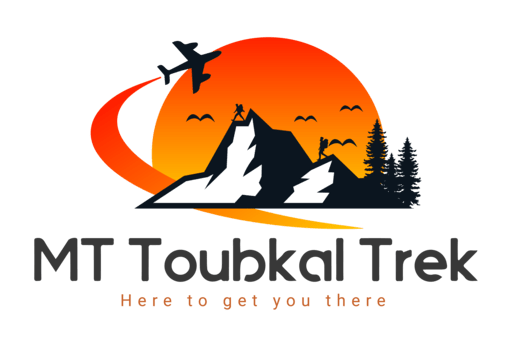If you’ve ever dreamt of traveling across golden dunes on camelback, with the wind sweeping over the Sahara and the sun setting in a blaze of crimson behind endless sand hills, then a Morocco camel trek is the experience you’ve been waiting for. This unforgettable journey offers not only a glimpse into the life of desert nomads but also an immersion into Morocco’s diverse geography, vibrant culture, and timeless hospitality.
Why Choose a Morocco Camel Trek?
A camel trek in Morocco is more than just a tourist activity—it’s a cultural odyssey. The slow, rhythmic pace of riding a camel gives you the chance to absorb the silence of the desert, the beauty of the shifting dunes, and the stories whispered by the wind. Morocco offers a variety of trekking experiences, from one-day outings near Marrakech to multi-day desert expeditions deep into the Erg Chebbi or Erg Chigaga dunes.
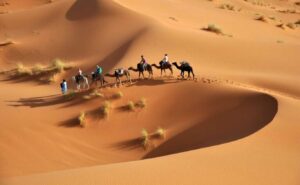
The camel, often called the “ship of the desert,” has been a vital companion for Saharan nomads for centuries. During a Morocco camel trek, you’ll be accompanied by experienced guides—often Berber or Tuareg locals—who share their deep knowledge of the terrain, survival techniques, and oral traditions passed down through generations.
Popular Starting Points for Camel Treks
Most Morocco camel trek tours begin in gateway towns like:
-
Merzouga: This is the most famous base for treks into the Erg Chebbi dunes. Located near the Algerian border, Merzouga offers easy access to towering dunes that can reach heights of 150 meters.
-
M’Hamid El Ghizlane: A more remote village near the Erg Chigaga dunes, perfect for longer and more authentic desert adventures.
-
Zagora: Often chosen for shorter treks, including overnight experiences. The famous “Timbuktu 52 Days” sign here reminds travelers of the ancient caravan routes.
-
Agafay Desert (near Marrakech): While not a true sand desert like the Sahara, Agafay offers a rocky desert landscape ideal for half-day camel rides with stunning views of the Atlas Mountains.
What to Expect on a Morocco Camel Trek
Whether you choose a short trek or a multi-day excursion, a Morocco camel trek typically includes:
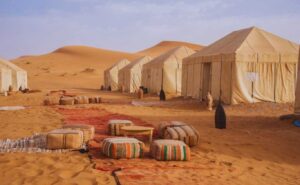
-
Camel ride and guidance: Each traveler is assigned a camel, and guides lead the caravan, ensuring safety and sharing cultural insights.
-
Berber Camp Accommodation: Most treks include an overnight stay in a traditional Berber tent. These camps are equipped with comfortable bedding, local meals, and even music performances around the campfire.
-
Stargazing: The desert’s remote location and lack of light pollution make for an unparalleled stargazing experience. Lying on a carpet under a sea of stars is a memory you won’t soon forget.
-
Sunset and Sunrise Views: Watching the sun rise or set over the dunes is a spiritual experience. The colors shift from golden yellow to deep orange and finally to a tranquil blue as night falls.
-
Local Cuisine: Expect dishes like tagine, couscous, and freshly baked flatbread, often cooked on-site by your guides. Meals are communal and often served under the open sky.
Best Time to Go
The best months for a Morocco camel trek are October through April, when the temperatures are more comfortable for both travelers and camels. During summer, the desert heat can be extreme, especially from June to August, and is generally not recommended for long treks.
Cultural Tips and Essentials
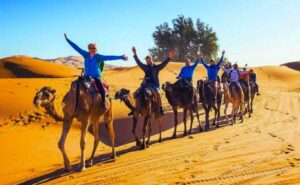
-
Dress Modestly and in Layers: Loose, breathable clothing is essential. A headscarf or turban is recommended to protect against sun and sand.
-
Bring Essentials: Sunscreen, sunglasses, a water bottle, and a flashlight or headlamp are must-haves.
-
Embrace Simplicity: A camel trek is a return to basics—limited electricity, rustic showers, and the calming disconnect from digital life.
-
Respect Local Customs: Your guides may come from deeply traditional communities. Show respect by asking before taking photos and learning a few words in Tamazight (Berber) or Arabic.
Not Just for Adventurers: Family and Luxury Options
While Morocco camel treks are often associated with rugged backpackers, there are also family-friendly and luxury options. Some tour providers offer private tents with en-suite bathrooms, gourmet meals, and 4×4 support vehicles. These treks cater to travelers who want the desert experience without sacrificing comfort.
For families, short camel rides and camps near Merzouga or Agafay allow children to safely enjoy the adventure. Educational components—such as learning how to tie a turban or bake bread in the sand—make the journey enriching for all ages.
Sample 3-Day Morocco Camel Trek Itinerary
Day 1: Departure from Merzouga
-
Mount your camel in the late afternoon and trek for 1.5–2 hours into the dunes.
-
Watch the sunset and arrive at the Berber camp.
-
Enjoy a traditional dinner, local music, and storytelling under the stars.
Day 2: Explore the Sahara
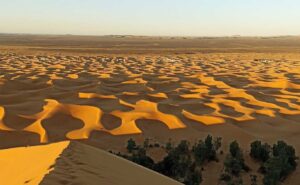
-
Wake early for sunrise views.
-
After breakfast, ride deeper into the dunes or visit a nomadic family.
-
Enjoy lunch at an oasis and return to a different camp for the night.
Day 3: Return Journey
-
After breakfast, ride back to the village.
-
Optional hammam or spa session in a nearby riad to unwind.
Eco-Tourism and Sustainability
Sustainable travel is becoming increasingly important, and many Morocco camel trek operators now follow eco-friendly practices. This includes:
-
Using solar-powered lanterns in camps.
-
Serving locally sourced food.
-
Employing local Berber communities, supporting rural economies.
Travelers are encouraged to leave no trace, avoid single-use plastics, and bring reusable water bottles.
Final Thoughts
A Morocco camel trek is not just a journey across the desert; it’s a voyage into a timeless world where silence reigns, and the stars guide your path. Whether you’re a solo traveler in search of spiritual solitude, a couple seeking a romantic adventure, or a family wanting a cultural escape, the Moroccan desert welcomes all.
The phrase “Morocco camel trek” will come to mean more than a tour—it becomes a story of dust and dreams, of ancient lands and the echo of camel steps on warm golden sands. It’s one of those rare experiences that changes you—offering perspective, serenity, and a deeper connection to both the earth and yourself.
